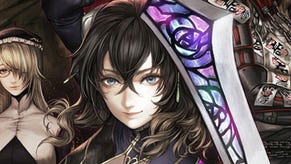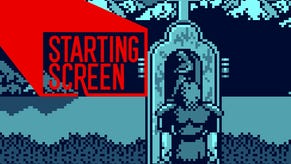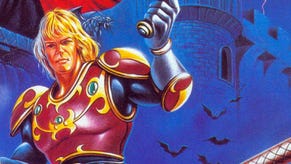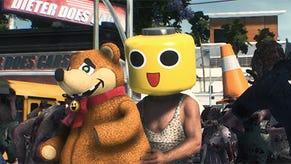Why We Still Love Castlevania: Symphony of the Night
A love for fun and detail help make Castlevania's PlayStation entry a timeless action game.
This article first appeared on USgamer, a partner publication of VG247. Some content, such as this article, has been migrated to VG247 for posterity after USgamer's closure - but it has not been edited or further vetted by the VG247 team.
In 1997, I scored my first part-time job. My first paycheck was divided across three items: Two South Park shirts and Castlevania: Symphony of the Night for the PlayStation. I also earned an angry lecture from my mother about responsible spending.
The shirts are long gone, having disintegrated after many cycles through the washer and dryer (not that I'd still wear a garment that screams "OH MY GOD, THEY KILLED KENNY"). But my passion for Symphony of the Night endures. Everyone has a "Top Ten Bestest Games Ever!" list living in their heads, and mine is as fickle as anyone's, but Symphony of the Night has remained on top, cemented, since the day I bought it.
I'm not the only one that retains love for Alucard's long, gorgeous journey to confront his estranged father. Symphony of the Night. It's been seventeen years since the release of the Castlevania series' opus, and it still has so much to offer fans of action games.

Goodbye, Hello Igarashi
My affection for Symphony of the Night made the news about the game's assistant director, Koji Igarashi leaving Konami kind of bittersweet. I suppose I clung to the fantasy that Igarashi would reveal another "Metroidvania" game – a successor to 2008's Castlevania: Order of Ecclesia – despite the fact he'd long ago moved on to making social games (a position he is simply not suited for, he admitted in an interview with Polygon at Game Developers Conference 2014).
Ultimately, my greedy little desires are irrelevant. Igarashi's decision to strike out on his own is a good thing, not only for himself, but for Japan's independent game development scene. Japanese game developers have been slow to break away from big corporations; even Igarashi admits giving up the security afforded to him by a lifetime of employment from Konami is risky business. But his new direction, coupled with Keiji Inafune's decision to leave Capcom and found Comcept in 2010, should help inspire fellow developers to eschew security for creativity.
Besides, what's to stop Igarashi from brewing up another gothic game? The Dracula mythos is rooted in public domain, making it easy enough for the veteran developer to give us more ghosts and vampires. True, it won't be Castlevania in name, but it doesn't need to be. Igarashi made a name for himself by helping to develop a game that turned everything about conventional Castlevania games upside-down (literally, in the case of Symphony of the Night's inverted castle).
Igarashi's work proves exploration and fighting make for an excellent Castlevania game, not necessarily whips and Belmonts. That's all we ask of Igarashi: A game that's as lovingly made as Symphony of the Night.

The Creature of Chaos That Everybody Loves
Even at its most basic level (and ignoring its infamous voice acting – but enough talk), the story and setting for Symphony of the Night is masterful. Excepting fans of Anne Rice books, those of use that grew up in the '80s and '90s didn't think of vampires as anything but pale blood-suckers with a strong fear of tanning beds. But Dracula's castle, that shifting "creature of chaos," isn't a run-down stone behemoth threaded with dull, drafty halls. It's a place fit for royalty that recalls Vlad the Impaler's roots in aristocracy.
Sure, there are bats, malicious magic, creepy critters, and everything else we associate with "traditional" vampires. There's also an alchemy lab, a great room lined with clocks, and a coliseum (decorated with the butchered carcass of the behemoth monster that chases Richter Belmont in the first level of 1993's Castlevania: Rondo of Blood for the PC Engine), which isn't a surprising addition for a bloodthirsty nobleman.
What is surprising is the large chapel near the top of the castle. It's brimming with religious symbolism, including crosses, statues of the Blessed Virgin, and even a confessional booth. You expect a chapel owned by a vampire to be a hateful place that's marred by spite and vandalism, but Dracula's chapel is permeated with a melancholy calmness.
Not to say there isn't a touch of demonism about the place. If Alucard sits in the aforementioned confessional, a ghost may appear, sweep the curtain shut, and attempt to stab him through the thin walls. It's these subtle instances of creepiness (amplified by the game's unparalleled soundtrack) that make it a joy to explore Dracula's castle again and again.
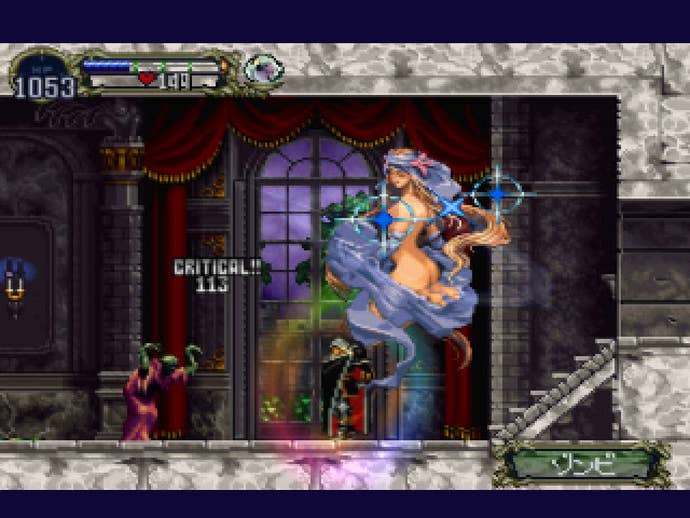
Slime, Succubi, and Secrets
Most Symphony of the Night fans have every location in the castle memorized, but even veterans might miss out on the myriad tiny details that escalate Symphony of the Night from a good game to an immortal one. I've played through Symphony of the Night more times than I can count, yet I only recently learned through a friend via Twitter that the counterfeit "Alucart" items (sword, armor, and shield) can be worn together to boost your luck, thus improving the game's rare item drop rate.
There are other little gameplay tricks as well. The owl knight's attack patterns vary depending on whether you kill the owl or its master first. If you manipulate the seemingly unimportant gears on the walls of some rooms in the clock tower, you can open up a secret room stocked with valuables. And if you put on the Gravity Boots, visit the room below the Master Librarian's, and jump up repeatedly, the Master Librarian will drop rare items, including a Max Life Up potion. Hee hee. Thank you.
Symphony of the Night is also stuffed with easily-missed graphical details that have no bearing on the gameplay, but demonstrate how much care went into the game. Have you ever seen the floating eyeball lurking in the background of the long hallway that connects the marble gallery with the outer wall? For that matter, have you ever seen the mice scurrying along the outside of the wall? Or the mother dove in the same area that gradually hatches her eggs and raises a family?
No matter how many times you play through Symphony of the Night, you're guaranteed to find something new that'll make you say, "Oh! Neat!" In 2012, Igarashi told Retro Gamer Magazine that he'd aimed to make Symphony of the Night a game players could come back to again and again. Mission certainly accomplished.
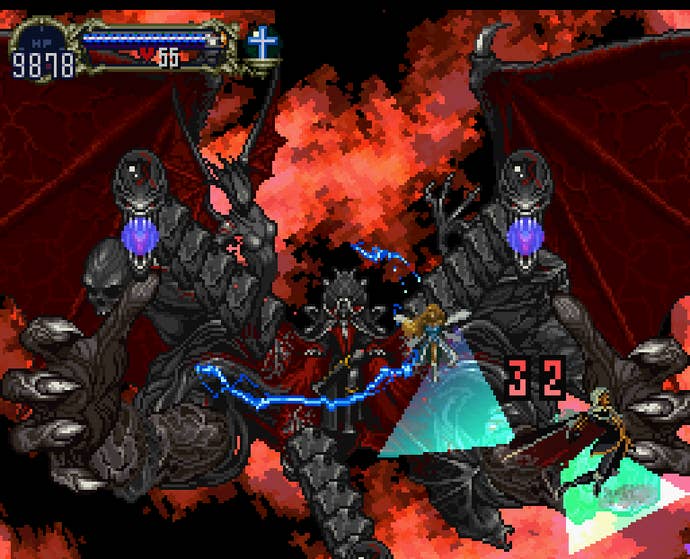
What a Wonderful Night to Start Anew
Castlevania: Symphony of the Night isn't just one of the greatest 2D action games ever orchestrated. It's something more important: A timeless example of how amazing a game can be when the developers in charge are free to have fun.
Whatever challenges Igarashi meets in the world of independent game development, I hope he enjoys himself. Fantastic games, regardless of the property they're based on, are sure to follow.


